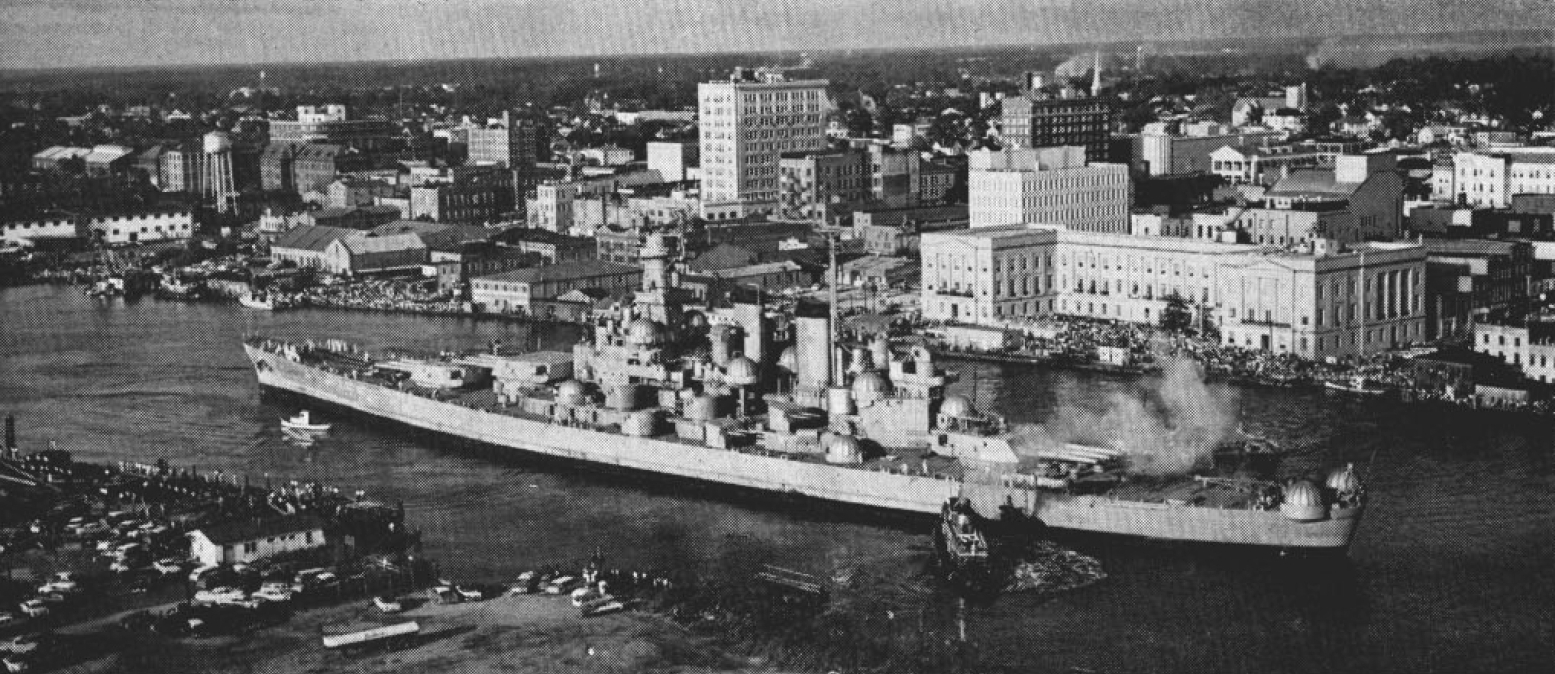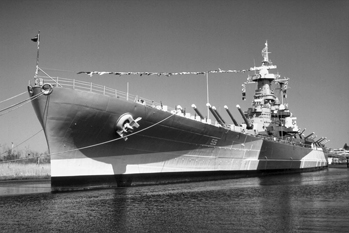The Arrival of Battleship North Carolina in Wilmington in 1961
The Battleship North Carolina, a proud symbol of American naval might, made a historic arrival in the port city of Wilmington in 1961. The battleship had served with distinction during World War II and was decommissioned in 1947. After a decade of being docked in various locations, the ship found a new home in Wilmington, North Carolina, where it would become a museum and memorial to honor the brave men who served aboard her during wartime. This article explores the significance of the ship’s arrival, the role it played during World War II, and its subsequent transformation into a cherished historical landmark.
The Battleship North Carolina, BB-55, was commissioned in 1941 and quickly became one of the most powerful battleships in the United States Navy fleet. Her formidable firepower, impressive speed, and advanced technology made her a vital asset during the Pacific Theater of World War II. The ship earned numerous commendations for her participation in major naval battles such as Guadalcanal, Iwo Jima, and Okinawa. Nicknamed “Showboat” due to her outstanding performance and appearance, the battleship had a reputation as a lucky ship with a skilled crew.
After the end of World War II, the Battleship North Carolina faced the inevitability of decommissioning along with many other naval vessels. In 1947, she was taken out of active service and designated as a reserve training ship. Over the next few years, the battleship found herself moved from one location to another, at times considered for scrapping or sinking as a target for naval exercises. However, a passionate group of North Carolinians campaigned for her preservation, recognizing her historical significance and the honor she brought to the state.
In 1961, the efforts of those advocating for the Battleship North Carolina’s preservation finally paid off. On October 2nd, the ship arrived in Wilmington, North Carolina, where she would become a permanent museum ship. This momentous event was met with excitement and celebration by the local community and naval enthusiasts from across the nation. Tugs nudged the massive battleship into her designated berth, signifying the official beginning of her new life as a museum and memorial.
Following her arrival in Wilmington, extensive restoration and renovation efforts were undertaken to convert the Battleship North Carolina into a museum. The ship’s interior was meticulously preserved to resemble its World War II-era appearance, offering visitors a unique opportunity to step back in time and experience the conditions under which the crew operated during wartime. The museum also houses an extensive collection of artifacts, photographs, and interactive exhibits that showcase the ship’s history and the bravery of those who served aboard her.
Since its transformation into a museum and memorial, the Battleship North Carolina has become a revered historical landmark and a popular tourist attraction. Visitors from all walks of life, including veterans, history enthusiasts, and families, come to pay tribute to the ship’s storied past and the sacrifices made by the brave sailors who fought aboard her. The battleship stands as a reminder of the resilience and heroism displayed by the American forces during World War II.
The arrival of the Battleship North Carolina in Wilmington in 1961 marked the beginning of a new chapter in its storied history. From a distinguished warship that played a crucial role in World War II to a cherished museum and memorial, the battleship continues to inspire and educate visitors about the sacrifices made by those who served in the armed forces. As the Battleship North Carolina stands tall in her berth, she embodies the indomitable spirit of the United States Navy and serves as a lasting tribute to the nation’s maritime heritage.
Hits: 0










